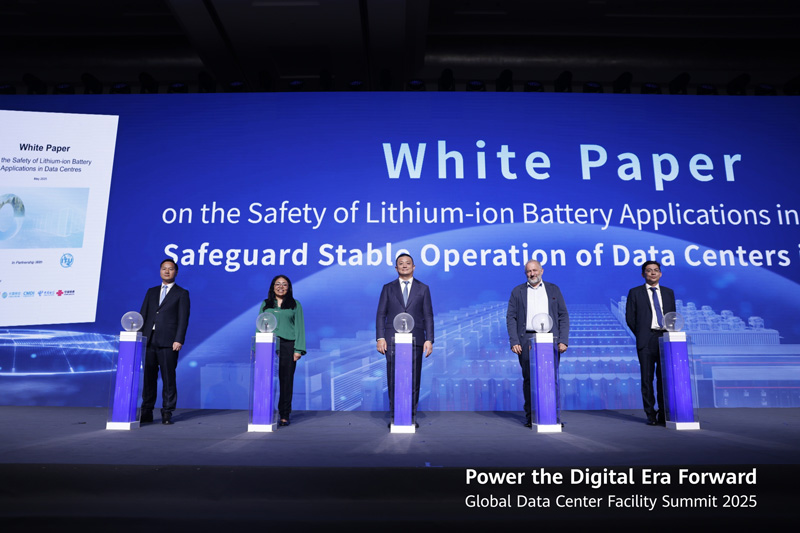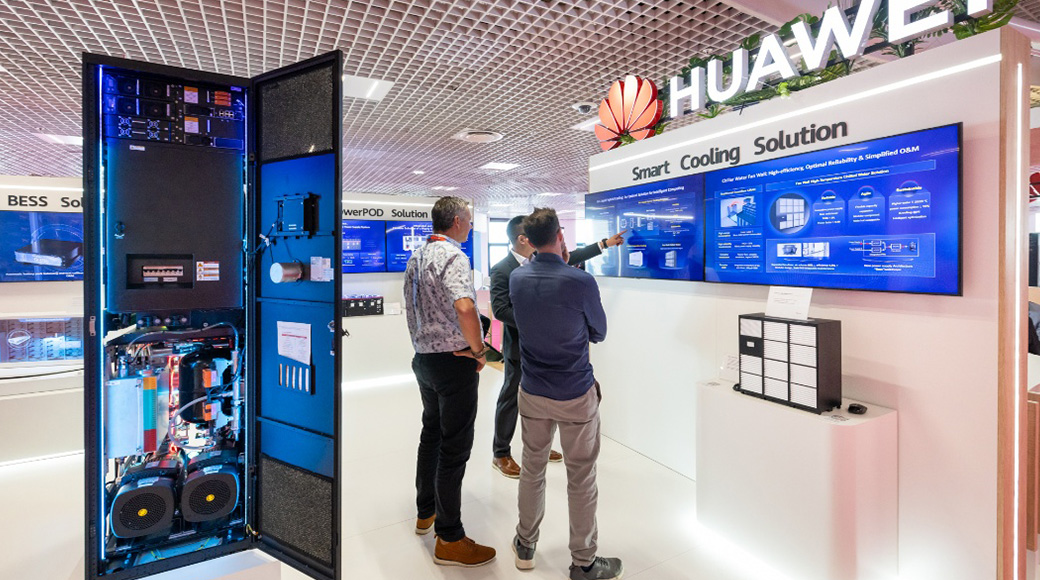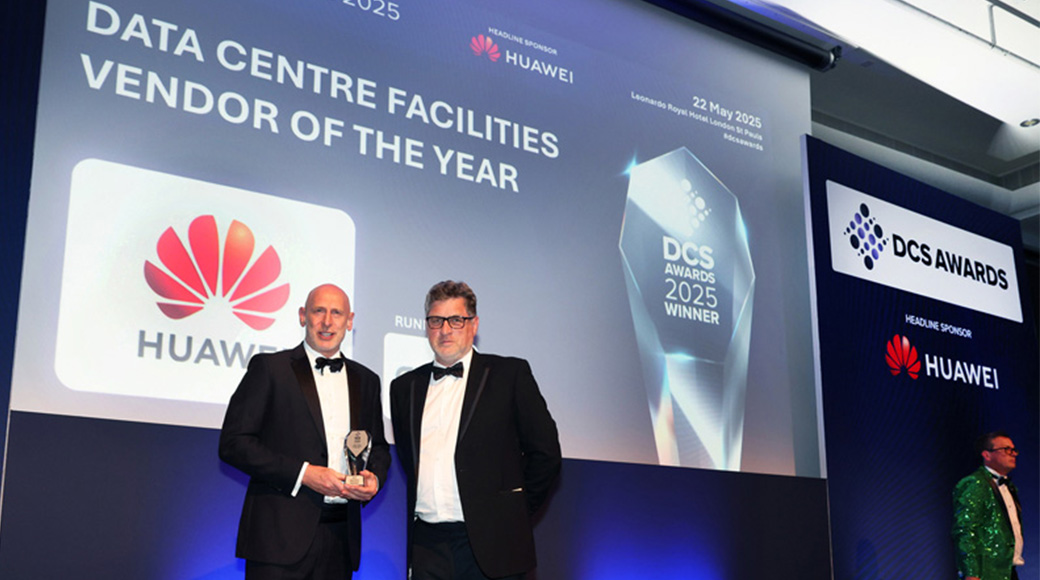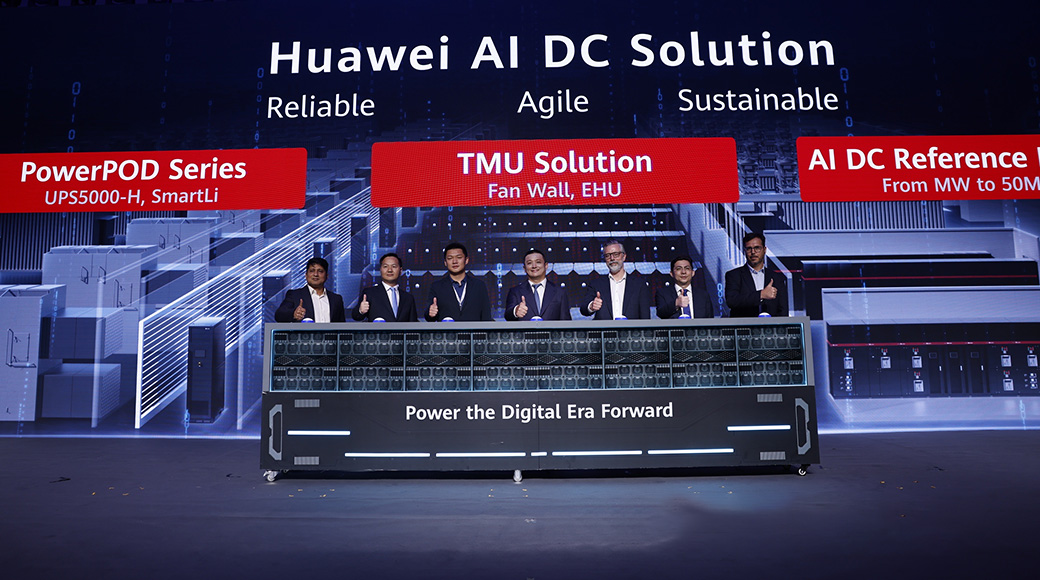On May 13, 2025, Huawei and the International Telecommunication Union (ITU), with the support of China Mobile Group Design Institute, China Telecom, China Unicom, and Alibaba Cloud, jointly released the White Paper on the Safety of Lithium-ion Battery Applications in Data Centres (referred to as the White Paper) at the Global Data Center Facility Summit 2025. The White Paper establishes the foundation for the standardized and large-scale safe application of lithium-ion batteries in the data centre industry, propelling the higher-quality development of the industry.
As the booming of AI foundation models accelerates the transition of the data centre industry from general-purpose to intelligent computing, the power density per rack is increasing sharply, posing stricter demands on the reliable operation of data centres. In the intelligent computing era, lithium-ion batteries are replacing traditional lead-acid batteries due to their higher energy density, longer service life, and higher discharge rate, making them the preferred power backup solution for data centers. However, lithium metal exhibits high chemical activity, which poses a risk of thermal runaway in extreme conditions. Such conditions can easily cause fires and affect the stable operation of data centres. Therefore, it is crucial to comprehensively improve the safety of lithium-ion battery applications in data centres.
At the summit, Reyna Ubeda, Engineer to ITU-T Study Group 5: Environment, EMF, Climate Action and Circular Economy, shared her insights on the White Paper. She emphasized that data centres, as the core infrastructure of the digital era, are the key driving force behind the development of the digital economy. The White Paper systematically outlines seven dimensions for enhancing the safety of lithium-ion battery applications in data centres, highlighting their importance for improving the safety and sustainability of digital infrastructure. She also called on the industry to accelerate the development of safety standards to guide the design, construction, and operation and maintenance (O&M) of lithium-ion batteries in data centres. Additionally, she called on all stakeholders to advance standards for the sustainable end-of-life management of lithium-ion batteries.

The White Paper emphasizes that the deployment of lithium-ion batteries in data centres should take safety into comprehensive considerations. The preferred solution is to deploy lithium-ion batteries remotely to isolate them from the data hall building. If the conditions for remote deployment are not met, lithium-ion batteries can be deployed in an independent room against the external wall of the data hall building. These approaches ensure the safe and reliable operation of data centres.
Lithium-ion battery fires spread quickly, are difficult to put out, and are prone to reignition. The White Paper clearly states that if lithium batteries are deployed in a dedicated room of the building where the data hall is located, the automatic fire extinguishing system shall use water as the fire extinguishing agent, and a water sprinkler system, water spray system, or water mist system is recommended to effectively prevent thermal propagation and battery reignition.
The safe application of lithium-ion batteries has been a key concern across the technology and energy sectors. The White Paper presents comprehensive and systematic solutions for their safe deployment. It also serves as a technical reference for developing standards specific to lithium-ion battery use in data centre, supporting the high-quality advancement of this critical technology.
Please click here to download: White Paper on the Safety of Lithium-ion Battery Applications in Data Centres








